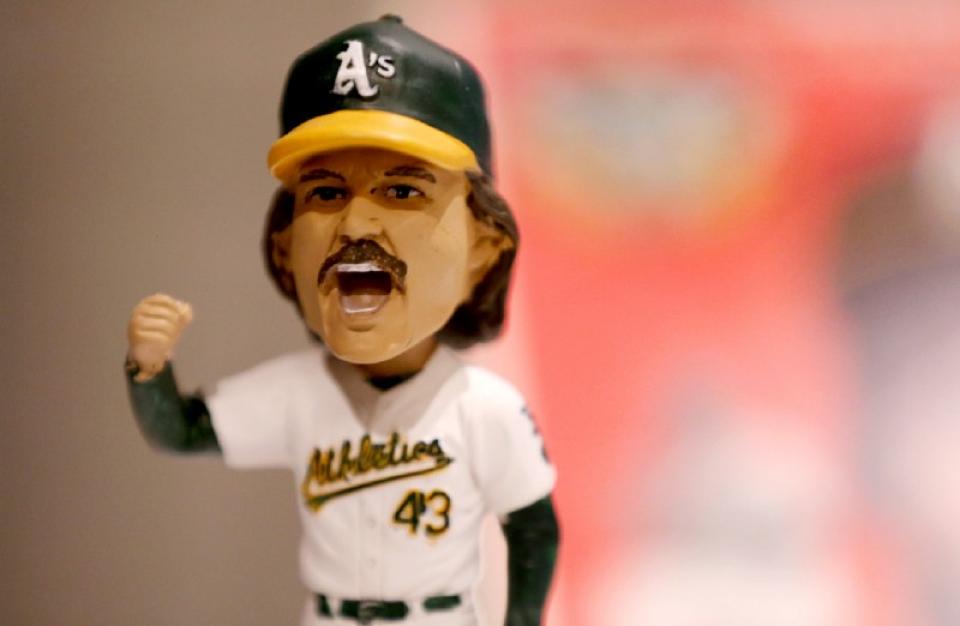Bobbleheads Rule! Promos Can Predict Baseball Attendance
Analysis shows giveaways boost MLB game ticket sales

Fresh cut outfield grass, the smell of hot dogs and cool spring nights mean one thing, the Major League Baseball (MLB) season is in full swing.
While having a competitive, star-studded team makes baseball marketers’ jobs much easier, promoting the players, team affinity and the fan experience today is a data-driven, big business.
My Moneyball Motivation
Three years ago, I watched the movie “Moneyball” — the story about how Oakland A’s, a small-market MLB team, put data science and statistics into play to bring together a strong team on a limited budget to beat other wealthy, big-market teams. In 2002 the A's won 20 consecutive games, setting an American League record. The A's went on to win the American League West with a record of 103-59. It was the first time I learned how data analytics can be so powerful, and it also inspired me to pursue a data career track.
For my independent study with Assistant Professor Mike Palazzolo at the UC Davis Graduate School of Management, with the help of my classmate Jamie Ho, I pitched a question about evaluating the effectiveness of MLB marketing, specifically the impact of ballpark promotions on ticket sales.
Ballparks and Bobbleheads
My study focused on one of the most popular stadium giveaway collectibles—bobbleheads. I asked: What is the true effect of ballpark bobblehead promotions, and how does that vary by team?
MLB teams have more home games (81) than the National Basketball Association (41) and the National Football League (8) combined. That means fans—even season ticket holders—are much less likely to attend every game. Ticket incentives are even more important, and bobblehead giveaways have become a mainstay for many baseball marketers.
Since 1999, promotional departments of MLB teams have been using these little men to squeeze extra attendance. Players appreciate it, and fans love them.
With decades of data to analyze, we decided to use a complete data set from the 2012 MLB season that includes attendance and promotional data from 30 teams. The data was published in “Marketing Data Science: Modeling Techniques in Predictive Analytics with R and Python” by Thomas Miller.
Our case study used a multi-level model to derive the fixed and random effects of bobblehead promotions on stadium attendance. For those scoring at home, you can download the dataset and my R code for the analysis here.
Head-Bobbing Dolls Drive Ticket Sales
Our analysis showed that the majority of MLB teams’ attendance increased at bobblehead giveaway games. During the 2012 season, an average of 4,494 more fans attended games that featured the promotion. Weekday game attendance increased by 24.7% with a bobblehead promotion, and weekend games increased by 8.9%.

We found that the Los Angeles Dodgers’ bobblehead giveaways had the biggest impact, drawing an average of 13,766 more fans for those games, followed by the Toronto Blue Jays (8,838) and the Atlanta Braves (6,678).
As many as 13 teams didn’t experience a clear effect on ticket sales from their bobblehead giveaways. These included the Boston Red Sox, the San Diego Padres, the Colorado Rockies and the Minnesota Twins. On the other hand, only one team suffered lower attendance at games with the promotion: the San Francisco Giants. The team drew an average of 1,023 fewer fans on bobblehead nights. (Ironically, the Giants were first major league baseball team to offer a bobblehead giveaway, distributing 35,000 Willie Mays head-nodders at their May 9, 1999 game.)
There are inevitably many factors, both on the field and off, that affect fans’ decisions to attend games. They consider the timing, weather, the teams playing, size of the team’s market and whether or not the game is a marquee game. This makes it even more difficult for baseball marketers to understand the true effect of the bobblehead promotions on ticket sales and attendance.
I am proud that our effort has led to strong results, and hopefully they will benefit marketers in their careers.
I am also happy that our independent study was featured in Promo Marketing Magazine as a first-of-its-kind analysis. This online publication’s recognition reinforces my decision to switch careers and pursue my MBA with an emphasis in marketing and business analytics.